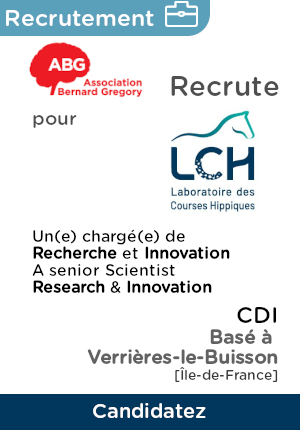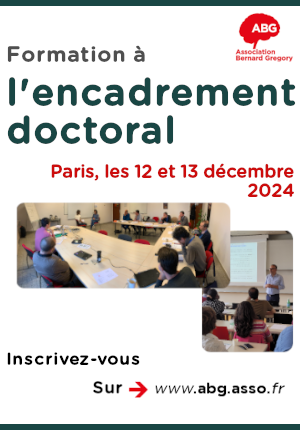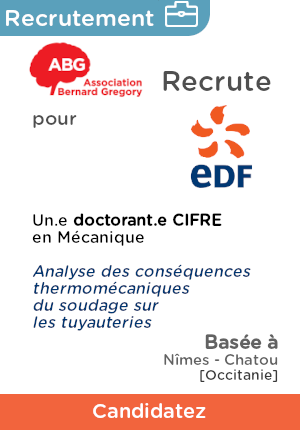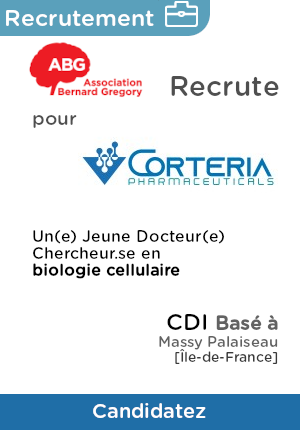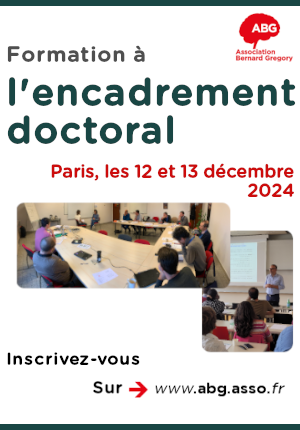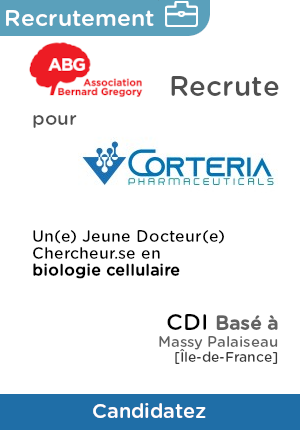Towards the fusion of heterogeneous information in-to security operations centres // Towards the fusion of heterogeneous information in-to security operations centres
|
ABG-125119
ADUM-58452 |
Thesis topic | |
| 2024-07-13 |
Université de Savoie Mont-Blanc
ANNECY-LE-VIEUX - France
Towards the fusion of heterogeneous information in-to security operations centres // Towards the fusion of heterogeneous information in-to security operations centres
- Open to all scientific expertises
Informatique , cybersecurité, intelligence Artificielle, Géopolitique
Computer science, cyber security, Artificial Intelligence , Geopolitics
Computer science, cyber security, Artificial Intelligence , Geopolitics
Topic description
3 Research topics (only one of these projects will be funded)
Project 1: Graph-based fusion of Heterogenous Data for Cybersecurity
Cybersecurity is dealing with heterogeneous data for decision process. Information might be periodic, or be event based, be structured, or simply textual. Integrating these heterogenous data into a coherent cybersecurity system remains a challenge. This research aims into developing tools that fusion heterogeneous cybersecurity data through graph-based methodologies. It aims also to develop visualization that is crucial, enhancing immersive 3D glasses.
Project 2 -Synthesizing Heterogeneous Intelligence for Enhanced Threat Landscape Detection
The exponential growth in data complexity and volume within cybersecurity domains necessitates the development of advanced processing capabilities to effectively manage and derive meaningful insights from vast amounts of information. This research topic proposes the application of generative neural networks, large language models (LLMs), and graph clustering techniques to conduct a comprehensive meta-analysis of heterogeneous cybersecurity information sources IDS, social media feeds, etc.
The primary objective is to investigate the potential of integrating these cutting-edge artificial intelligence (AI) methodologies to refine raw data into strategically actionable intelligence. More specifically, the research questions include how large language models (LLMs) can be effectively integrated into cybersecurity security operations to optimize the processing.
Furthermore, this research is also to comprehensively understand the attack vectors that could target AI-driven systems within SOCs, with a specific emphasis on the manipulation of data inputs. The research seeks to contribute to the design and development of robust AI systems that exhibit resilience against manipulation and maintain reliable operation even under adversarial conditions. The research will employ a multi-faceted approach, leveraging techniques from machine learning, data science, and cybersecurity.
Project 3: Mapping the logical layer of Internet to its physical layer: fusioning routing information sources
Internet is a large-scale system built over a physical infrastructure that are positioned in the physical space. Over this infrastructure, several layers of logical structures are built that provide connectivity between networked applications. While internet might seem a nebulous and virtual structure, the physical infrastructure is the concrete element of Internet where real-world constraints, i.e., economic, (geo)political or technical, might be imposed. Data from source to destination, cross different physical infrastructures, likely in different countries with various level of interference risks. Localizing these infrastructures in the geographical space is of utmost importance, for the geopolitics of cyberspace, the security of information, and the resilience of the Internet. Unfortunately, the layered architecture of the Internet is hiding the localization of infrastructure. But Internet actors have fortunately to uncover a large part of these hidden information to enable connectivity. Therefore, several source of information, e.g, BGP announcements, Traceroutes, delay measurements, etc., can be exploited to the infrastructures. Nonetheless, we need to develop methods for gathering and fusing these heterogeneous information's to attain a consistent and coherent vision. The thesis will combine deep knowledge of how Internet infrastructures work with advanced mathematical and statistical skill to develop new methods for matching the logical level of the Internet to its physical level. This project will come as a follow-up to several previous research efforts in this direction.
The project will be implemented with the support of French Institute of Geopolitics
------------------------------------------------------------------------------------------------------------------------------------------------------------------------
------------------------------------------------------------------------------------------------------------------------------------------------------------------------
3 Research topics (only one of these projects will be funded)
Project 1: Graph-based fusion of Heterogenous Data for Cybersecurity
Cybersecurity is dealing with heterogeneous data for decision process. Information might be periodic, or be event based, be structured, or simply textual. Integrating these heterogenous data into a coherent cybersecurity system remains a challenge. This research aims into developing tools that fusion heterogeneous cybersecurity data through graph-based methodologies. It aims also to develop visualization that is crucial, enhancing immersive 3D glasses.
Project 2 -Synthesizing Heterogeneous Intelligence for Enhanced Threat Landscape Detection
The exponential growth in data complexity and volume within cybersecurity domains necessitates the development of advanced processing capabilities to effectively manage and derive meaningful insights from vast amounts of information. This research topic proposes the application of generative neural networks, large language models (LLMs), and graph clustering techniques to conduct a comprehensive meta-analysis of heterogeneous cybersecurity information sources IDS, social media feeds, etc.
The primary objective is to investigate the potential of integrating these cutting-edge artificial intelligence (AI) methodologies to refine raw data into strategically actionable intelligence. More specifically, the research questions include how large language models (LLMs) can be effectively integrated into cybersecurity security operations to optimize the processing.
Furthermore, this research is also to comprehensively understand the attack vectors that could target AI-driven systems within SOCs, with a specific emphasis on the manipulation of data inputs. The research seeks to contribute to the design and development of robust AI systems that exhibit resilience against manipulation and maintain reliable operation even under adversarial conditions. The research will employ a multi-faceted approach, leveraging techniques from machine learning, data science, and cybersecurity.
Project 3: Mapping the logical layer of Internet to its physical layer: fusioning routing information sources
Internet is a large-scale system built over a physical infrastructure that are positioned in the physical space. Over this infrastructure, several layers of logical structures are built that provide connectivity between networked applications. While internet might seem a nebulous and virtual structure, the physical infrastructure is the concrete element of Internet where real-world constraints, i.e., economic, (geo)political or technical, might be imposed. Data from source to destination, cross different physical infrastructures, likely in different countries with various level of interference risks. Localizing these infrastructures in the geographical space is of utmost importance, for the geopolitics of cyberspace, the security of information, and the resilience of the Internet. Unfortunately, the layered architecture of the Internet is hiding the localization of infrastructure. But Internet actors have fortunately to uncover a large part of these hidden information to enable connectivity. Therefore, several source of information, e.g, BGP announcements, Traceroutes, delay measurements, etc., can be exploited to the infrastructures. Nonetheless, we need to develop methods for gathering and fusing these heterogeneous information's to attain a consistent and coherent vision. The thesis will combine deep knowledge of how Internet infrastructures work with advanced mathematical and statistical skill to develop new methods for matching the logical level of the Internet to its physical level. This project will come as a follow-up to several previous research efforts in this direction.
The project will be implemented with the support of French Institute of Geopolitics
------------------------------------------------------------------------------------------------------------------------------------------------------------------------
------------------------------------------------------------------------------------------------------------------------------------------------------------------------
Début de la thèse : 06/01/2025
WEB : https://aufrande.eu/position/dc64/
Project 1: Graph-based fusion of Heterogenous Data for Cybersecurity
Cybersecurity is dealing with heterogeneous data for decision process. Information might be periodic, or be event based, be structured, or simply textual. Integrating these heterogenous data into a coherent cybersecurity system remains a challenge. This research aims into developing tools that fusion heterogeneous cybersecurity data through graph-based methodologies. It aims also to develop visualization that is crucial, enhancing immersive 3D glasses.
Project 2 -Synthesizing Heterogeneous Intelligence for Enhanced Threat Landscape Detection
The exponential growth in data complexity and volume within cybersecurity domains necessitates the development of advanced processing capabilities to effectively manage and derive meaningful insights from vast amounts of information. This research topic proposes the application of generative neural networks, large language models (LLMs), and graph clustering techniques to conduct a comprehensive meta-analysis of heterogeneous cybersecurity information sources IDS, social media feeds, etc.
The primary objective is to investigate the potential of integrating these cutting-edge artificial intelligence (AI) methodologies to refine raw data into strategically actionable intelligence. More specifically, the research questions include how large language models (LLMs) can be effectively integrated into cybersecurity security operations to optimize the processing.
Furthermore, this research is also to comprehensively understand the attack vectors that could target AI-driven systems within SOCs, with a specific emphasis on the manipulation of data inputs. The research seeks to contribute to the design and development of robust AI systems that exhibit resilience against manipulation and maintain reliable operation even under adversarial conditions. The research will employ a multi-faceted approach, leveraging techniques from machine learning, data science, and cybersecurity.
Project 3: Mapping the logical layer of Internet to its physical layer: fusioning routing information sources
Internet is a large-scale system built over a physical infrastructure that are positioned in the physical space. Over this infrastructure, several layers of logical structures are built that provide connectivity between networked applications. While internet might seem a nebulous and virtual structure, the physical infrastructure is the concrete element of Internet where real-world constraints, i.e., economic, (geo)political or technical, might be imposed. Data from source to destination, cross different physical infrastructures, likely in different countries with various level of interference risks. Localizing these infrastructures in the geographical space is of utmost importance, for the geopolitics of cyberspace, the security of information, and the resilience of the Internet. Unfortunately, the layered architecture of the Internet is hiding the localization of infrastructure. But Internet actors have fortunately to uncover a large part of these hidden information to enable connectivity. Therefore, several source of information, e.g, BGP announcements, Traceroutes, delay measurements, etc., can be exploited to the infrastructures. Nonetheless, we need to develop methods for gathering and fusing these heterogeneous information's to attain a consistent and coherent vision. The thesis will combine deep knowledge of how Internet infrastructures work with advanced mathematical and statistical skill to develop new methods for matching the logical level of the Internet to its physical level. This project will come as a follow-up to several previous research efforts in this direction.
The project will be implemented with the support of French Institute of Geopolitics
------------------------------------------------------------------------------------------------------------------------------------------------------------------------
------------------------------------------------------------------------------------------------------------------------------------------------------------------------
3 Research topics (only one of these projects will be funded)
Project 1: Graph-based fusion of Heterogenous Data for Cybersecurity
Cybersecurity is dealing with heterogeneous data for decision process. Information might be periodic, or be event based, be structured, or simply textual. Integrating these heterogenous data into a coherent cybersecurity system remains a challenge. This research aims into developing tools that fusion heterogeneous cybersecurity data through graph-based methodologies. It aims also to develop visualization that is crucial, enhancing immersive 3D glasses.
Project 2 -Synthesizing Heterogeneous Intelligence for Enhanced Threat Landscape Detection
The exponential growth in data complexity and volume within cybersecurity domains necessitates the development of advanced processing capabilities to effectively manage and derive meaningful insights from vast amounts of information. This research topic proposes the application of generative neural networks, large language models (LLMs), and graph clustering techniques to conduct a comprehensive meta-analysis of heterogeneous cybersecurity information sources IDS, social media feeds, etc.
The primary objective is to investigate the potential of integrating these cutting-edge artificial intelligence (AI) methodologies to refine raw data into strategically actionable intelligence. More specifically, the research questions include how large language models (LLMs) can be effectively integrated into cybersecurity security operations to optimize the processing.
Furthermore, this research is also to comprehensively understand the attack vectors that could target AI-driven systems within SOCs, with a specific emphasis on the manipulation of data inputs. The research seeks to contribute to the design and development of robust AI systems that exhibit resilience against manipulation and maintain reliable operation even under adversarial conditions. The research will employ a multi-faceted approach, leveraging techniques from machine learning, data science, and cybersecurity.
Project 3: Mapping the logical layer of Internet to its physical layer: fusioning routing information sources
Internet is a large-scale system built over a physical infrastructure that are positioned in the physical space. Over this infrastructure, several layers of logical structures are built that provide connectivity between networked applications. While internet might seem a nebulous and virtual structure, the physical infrastructure is the concrete element of Internet where real-world constraints, i.e., economic, (geo)political or technical, might be imposed. Data from source to destination, cross different physical infrastructures, likely in different countries with various level of interference risks. Localizing these infrastructures in the geographical space is of utmost importance, for the geopolitics of cyberspace, the security of information, and the resilience of the Internet. Unfortunately, the layered architecture of the Internet is hiding the localization of infrastructure. But Internet actors have fortunately to uncover a large part of these hidden information to enable connectivity. Therefore, several source of information, e.g, BGP announcements, Traceroutes, delay measurements, etc., can be exploited to the infrastructures. Nonetheless, we need to develop methods for gathering and fusing these heterogeneous information's to attain a consistent and coherent vision. The thesis will combine deep knowledge of how Internet infrastructures work with advanced mathematical and statistical skill to develop new methods for matching the logical level of the Internet to its physical level. This project will come as a follow-up to several previous research efforts in this direction.
The project will be implemented with the support of French Institute of Geopolitics
------------------------------------------------------------------------------------------------------------------------------------------------------------------------
------------------------------------------------------------------------------------------------------------------------------------------------------------------------
Début de la thèse : 06/01/2025
WEB : https://aufrande.eu/position/dc64/
Funding category
Funding further details
Programmes de l'Union Européenne de financement de la recherche (ERC, ERASMUS)
Presentation of host institution and host laboratory
Université de Savoie Mont-Blanc
Institution awarding doctoral degree
Université de Savoie Mont-Blanc
Graduate school
634 Sciences Ingénierie Environnement
Candidate's profile
Successful candidates for this position will be enrolled by the following institutions and must comply with their specific entry requirements, in addition to AUFRANDE's conditions.
Applicants must hold a Master of Science or Master of Engineering or another similar world-class master's degree (officially recognized as equivalent by the French Higher Education and Research authorities) containing a significant research component.
If English is not your first language, you will be required to demonstrate English language proficiency in the form of an English test that has been taken within the two years preceding the date of commencement. The following test types are accepted:
o IELTS (International English Language Testing System) Academic
o TOEFL (Test of English as a Foreign Language) Internet Based Test
o PTE (Pearson Test of English) Academic
o C1 Advanced (formerly CAE - Cambridge English: Advanced)
Successful candidates for this position will be enrolled by the following institutions and must comply with their specific entry requirements, in addition to AUFRANDE's conditions. Applicants must hold a Master of Science or Master of Engineering or another similar world-class master's degree (officially recognized as equivalent by the French Higher Education and Research authorities) containing a significant research component. If English is not your first language, you will be required to demonstrate English language proficiency in the form of an English test that has been taken within the two years preceding the date of commencement. The following test types are accepted: o IELTS (International English Language Testing System) Academic o TOEFL (Test of English as a Foreign Language) Internet Based Test o PTE (Pearson Test of English) Academic o C1 Advanced (formerly CAE - Cambridge English: Advanced)
Successful candidates for this position will be enrolled by the following institutions and must comply with their specific entry requirements, in addition to AUFRANDE's conditions. Applicants must hold a Master of Science or Master of Engineering or another similar world-class master's degree (officially recognized as equivalent by the French Higher Education and Research authorities) containing a significant research component. If English is not your first language, you will be required to demonstrate English language proficiency in the form of an English test that has been taken within the two years preceding the date of commencement. The following test types are accepted: o IELTS (International English Language Testing System) Academic o TOEFL (Test of English as a Foreign Language) Internet Based Test o PTE (Pearson Test of English) Academic o C1 Advanced (formerly CAE - Cambridge English: Advanced)
2024-08-27
Apply
Close
Vous avez déjà un compte ?
Nouvel utilisateur ?
More information about ABG?
Get ABG’s monthly newsletters including news, job offers, grants & fellowships and a selection of relevant events…
Discover our members
 Institut de Radioprotection et de Sureté Nucléaire - IRSN - Siège
Institut de Radioprotection et de Sureté Nucléaire - IRSN - Siège  TotalEnergies
TotalEnergies  MabDesign
MabDesign  Tecknowmetrix
Tecknowmetrix  ONERA - The French Aerospace Lab
ONERA - The French Aerospace Lab  Ifremer
Ifremer  Institut Sup'biotech de Paris
Institut Sup'biotech de Paris  CESI
CESI  Groupe AFNOR - Association française de normalisation
Groupe AFNOR - Association française de normalisation  Nokia Bell Labs France
Nokia Bell Labs France  Laboratoire National de Métrologie et d'Essais - LNE
Laboratoire National de Métrologie et d'Essais - LNE  ADEME
ADEME  PhDOOC
PhDOOC  MabDesign
MabDesign 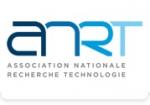 ANRT
ANRT  Généthon
Généthon  SUEZ
SUEZ  CASDEN
CASDEN  Aérocentre, Pôle d'excellence régional
Aérocentre, Pôle d'excellence régional
-
JobPermanentRef. ABG123642Laboratoire des Courses Hippiques (GIE LCH)- Ile-de-France - France

Chargé(e) de Recherche et Innovation (H/F) / Senior Scientist Research & Innovation (M/F)
Chemistry - BiochemistryConfirmed -
JobFixed-termRef. ABG125071KTH- Sweden
ERC-funded postdoc position on the detection of gas-phase organic radicals, KTH, Stockholm, Sweden
Chemistry - Physics - Engineering sciencesAny -
JobPermanentRef. ABG124941Corteria Pharmaceuticals- Ile-de-France - France

Jeune Docteur, Chercheur en Biologie Cellulaire & Moléculaire (H/F)
BiologyAny

